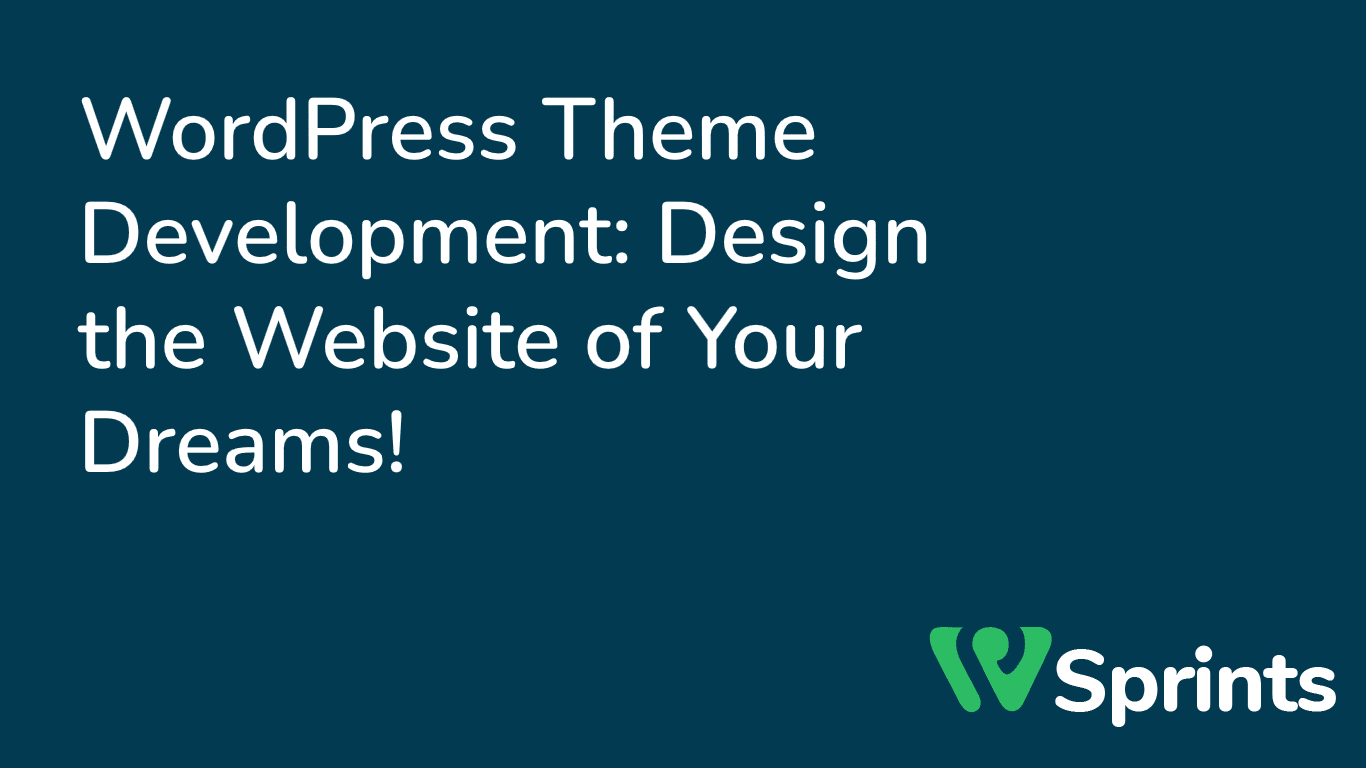Create the Website of Your Dreams with WordPress Theme Development!
Introduction
For corporations, organisations, and individuals, having an appealing and useful website is crucial in the realm of web design. A flexible content management system (CMS) like WordPress offers a strong framework for building dynamic and aesthetically beautiful websites. You have the chance to create and alter the website of your dreams with WordPress theme development. This post will go into the fascinating world of WordPress theme development and show you how it may help you realise your creative ideas.

1. WordPress Theme Development’s Power
a. Creative Flexibility: Making WordPress themes allows you the greatest amount of creative freedom. Building your own themes gives you the ability to create a one-of-a-kind website that perfectly represents your company brand and satisfies your particular needs, as opposed to using pre-designed themes. You have complete control over the layout, colour scheme, font, and general appearance of your website.
b. Customizability: You can easily alter WordPress themes to suit your needs. You can customise every aspect of the style and functioning of your website, from little adjustments to substantial changes. This versatility enables you to design a website that supports your objectives and successfully engages your target audience.
c. Responsive Design: Having a responsive website is essential in today’s mobile-first environment. You may create responsive designs that automatically adjust to various screen sizes and devices by using WordPress theme development. This guarantees a smooth user experience across smartphones, tablets, and desktop computers as well as excellent website functionality.
d. You can improve your website’s performance by designing a customised WordPress theme. By writing clean, concise code, you may ensure faster website loads, better user experiences, and higher search engine results. Additionally, you can decide to exclude any unused bloat and only include the features and functionalities that are really necessary. This will enhance efficiency.
2. How to Start Developing WordPress Themes
a. Plan and Sketch: Spend some time planning and sketching out the structure, layout, and desired features of your website before you start writing any code. You’ll be able to see the finished product more clearly and the development process will go more quickly. Take into account components like call-to-action buttons, navigation, and content organisation.
b. Create a Development Environment: Use cloud-based development platforms or tools like XAMPP or WAMP to set up a local development environment. As a result, you may experiment, test, and tweak your theme without having any negative effects on your live website. Version control and collaborative development are also made possible.
c. HTML/CSS Markup: Begin by establishing the theme’s fundamental HTML structure. Create sections for your template, such as a header, footer, sidebar, and content area. Apply fonts, colours, spacing, and other visual properties to your HTML components with CSS. Make sure your design is responsive and functions well across a variety of platforms.
d. PHP Integration: Since PHP powers WordPress themes, it’s crucial to incorporate PHP code into your theme. Use PHP to develop functionality like menus, widgets, and custom post types, as well as to retrieve and display dynamic content. Utilise the WordPress Template Hierarchy to efficiently arrange your PHP files.
e. Use WordPress APIs: WordPress has a number of robust APIs and features that make developing themes easier. Use APIs like the Customizer API to customise themes, the Widget API to create custom widgets, and the Theme Options API to access more theme settings. These APIs improve your theme’s usability and usefulness.
f. Test and Debug: To ensure compatibility and responsiveness, thoroughly test your theme on a variety of browsers, gadgets, and screen sizes. Look for any defects or problems, then fix them as necessary. Verify your code’s compliance with best practises and standards by validating it.
Conclusion
The creation of WordPress themes opens up a world of options for creating the website of your desires. You can display your brand, fascinate your audience, and accomplish your online goals with the ability to construct unique, aesthetically pleasing, and highly functioning websites. By utilising WordPress’ versatility and customizability, you can realise your creative vision and stand out in the online environment.
Remember to outline the structure of your website, set up a development environment, use HTML/CSS markup, incorporate PHP code, and make use of WordPress APIs throughout the development process. You may make a well-structured, responsive, and optimised WordPress theme by following these instructions and using best practises.
In order to guarantee that your theme works seamlessly across a variety of devices and browsers, regular testing and debugging is required. Spend some time validating your code, fixing any errors or bugs, and honing the user experience.
Keep in mind that creating WordPress themes is a continuous activity. You might need to update and improve your theme as technology advances and your website’s requirements change. Maintain up-to-date knowledge of new WordPress features and approaches, and experiment with them to continuously enhance the appearance and usability of your website.
The ability to construct a website that accurately conveys your brand, engages your audience, and propels your online success is provided by WordPress theme development. Take use of the flexibility and creativity it affords to maximise your internet visibility. Start your WordPress theme creation journey right away to bring your concepts to beautiful life!




